| 10 November |
• yesterday • tomorrow |
| Memorial of Saint Leo the Great, Pope and Doctor of the Church |
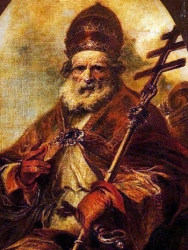
Leo I
Born to the Italian nobility. Strong student, especially in scripture and theology. Priest. Eloquent writer and homilist.
Pope from 440 to 461 during the time of the invasion of Attila the Hun. When Attila marched on Rome, Leo went out to meet him and pleaded for him to leave. As Leo spoke, Attila saw the vision of a man in priestly robes, carrying a bare sword, and threatening to kill the invader if he did not obey Leo; Attila left. As Leo had a great devotion to Saint Peter the Apostle, it is generally believed the first pope was the visionary opponent to the Huns. When Genseric invaded Rome, Leo's sanctity and eloquence saved the city again.
Called the Council of Chalcedon to condemn heresies of the day. Fought Nestorianism, Monophysitism, Manichaeism, and Pelagianism. Built churches. Wrote letters and sermons encouraging and teaching his flock, many of which survive today; it is for these writings that Leo was proclaimed a Doctor of the Church in 1574.
c.400 at Tuscany, Italy
29 September 440
11 April 461 at Rome, Italy
• Books
Peter has spoken by the mouth of Leo. - Council of Chalcedon
Virtue is nothing without the trial of temptation, for there is no conflict without an enemy, no victory without strife. - Pope Saint Leo the Great
Although the universal Church of God is constituted of distinct orders of members, still, in spite of the many parts of its holy body, the Church subsists as an integral whole, just as the Apostle says: "We are all one in Christ," nor is anyone separated from the office of another in such a way that a lower group has no connection with the head. In the unity of faith and baptism, our community is then undivided. There is a common dignity as the apostle Peter says in these words: "And you are built up as living stones into spiritual houses, a holy priesthood, offering spiritual sacrifices which are acceptable to God through Jesus Christ." And again: "But you are a chosen people, a royal priesthood, a holy nation, a people of election." For all, regenerated in Christ, as made kings by the sign of the cross. They are consecrated priests by the oil of the Holy Spirit, so that beyond the special service of our ministry as priests, all spiritual and mature Christians know that they are a royal race and are sharers in the office of the priesthood. For what is more king-like than to find yourself ruler over your body after having surrendered your soul to God? And what is more priestly than to promise the Lord a pure conscience and to offer him in love unblemished victims on the altar of one's heart? - from a sermon by Pope Saint Leo the Great
God decreed that all nations should be saved in Christ. Dear friends, now that we have received instruction in this revelation of God's grace, let us celebrate with spiritual joy the day of our first harvesting, of the first calling of the Gentiles. Let us give thanks to the merciful God, "who has made us worthy," in the words of the Apostle, "to share the position of the saints in light; who has rescued us from the power of darkness, and brought us into the kingdom of this beloved Son." This came to be fulfilled, as we know, from the time when the star beckoned the three wise men out of their distant country and led them to recognize and adore the King of heaven and earth. The obedience of the star calls us to imitate its humble service: to be servants, as best we can, of the grace that invites all men to find Christ. - from a sermon by Pope Saint Leo the Great
https://catholicsaints.info/pope-saint-leo-the-great/
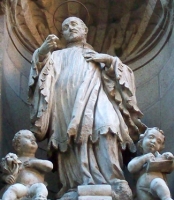
• Andrea Avellino
• Lancelotto
• Lorenzo Avellino
Studied humanities and philosophy at Venice, Italy. Doctor of civil and ecclesiastical law. Ordained at age 26.
Lawyer at the ecclesiastical court at Naples, Italy. During a heated courtroom argument on behalf of a friend, he supported his position with a lie; in that setting, he had committed perjury. It shook him so badly, he gave up the legal profession, and settled into a life of penance.
Commissioned by his archbishop to reform the convent of Sant' Arcangelo at Naples, a house of such lax discipline it had became a topic of gossip in the city. Through good example, constant work, and the backing of his bishop Lorenzo managed to restore celibate discipline to the house, but was nearly killed for his efforts when he was attacked by people who had been ordered off the premises.
The night of the attack, he was taken to the house of the Theatine Clerks Regular. He was so impressed with them that he joined the Theatines at age 35, taking the name Andrew in reference to the crucified Apostle. Master of novices for ten years. Superior of the Order. Founded Theatine houses in Milan, Italy and Piacenza, Italy and helped establish others. Eloquent preacher, and popular missioner and spiritual director, bringing many back to the Church. Writer and extensive correspondent. Friend and advisor of Saint Charles Borromeo.
Suffered a stroke while celebrating Mass, and died soon after. Legend says that his blood bubbled and liquified after death, which led some to think that his stroke had left him catatonic, and that he was buried alive; a papal investigator found no credibility to any of this.
1521 at Castronuovo, Sicily as Lorenzo (called Lancelotto by his mother)
• 10 November 1608 at Naples, Italy of a stroke
• relics enshrined at the Church of Saint Paul in Naples
10 June 1625 by Pope Urban VIII
22 May 1712 by Pope Clement XI
• against apoplexy or strokes
• against sudden death
• apoplexics or stroke victims
• for a holy death
• Badolato, Italy
• Naples, Italy
• Sicily, Italy
priest dying in front of an altar
One cannot separate the most Holy Eucharist from the Passion of Jesus. - Saint Andrew Avellino
https://catholicsaints.info/saint-andrew-avellino/
Born to the nobility. Gave away all his wealth to the poor, and lived as a hermit in a hut on the banks of the River Tanaro. Miracle worker with the gifts of clairvoyance and prophesy; wild animals were reported to come to his hut to hear him speak about God. Tradition says that in 1174 he appeared on the walls of the city of Alessandria, putting a beseiging army to flight. Legends grew up around him, many of which turned him into a bishop or archbishop instead of the simple hermit he was.
c.700
• c.740 of natural causes
• interred at Villa del Foro, Italy
• relics moved to a Humiliati church in Alessandria, Italy when Villa del Foro and Alessandria merged in 1168
• relics moved to the church of Saint Alessandro in 1803
• relics moved to the Saint Baudolino chapel in the Alessandria cathedral in 1810
• Alessandria, Italy, city of (proclaimed in 1786)
• Alessandria, Italy, diocese of (proclaimed in 1786)
surrounded by peaceful wild animals
https://catholicsaints.info/saint-baudolino/
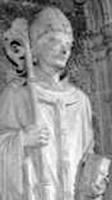
Benedictine monk. Priest. Missionary to the Anglo-Saxons in 601, sent by Pope Saint Gregory the Great. Worked with Saint Augustine of Canterbury, Saint Paulinus of York, and Saint Lawrence of Canterbury. First bishop of Rochester, England in 604. In 616, the death of King Saint Ethelbert of Kent led to a resurgence of paganism; Justus and Saint Mellitus of Canterbury retreated to Gaul, but in 617 returned and resumed their work. Archbishop of Canterbury in 624.
Rome, Italy
• 627 of natural causes
• buried in Saint Augustine's abbey, Canterbury, England
Volterra, Italy
archbishop carrying a Primatial cross
https://catholicsaints.info/saint-justus-of-canterbury/
• Aedh mac Breece
• Aed, Aod, Aedsind
Son of Breece (Bricc) of the Hy Neill, the boy grew up working on his father's farm. When his father died, Aedh's brother refused to give him his rightful inheritance. Aedh planned to kidnap a girl from his brother's household to force the issue, but Illathan, bishop of Rathlihen, Offay, talked him out of it. Aedh stayed with the bishop to study and start a new life. He founded a monastery at Cill-áir in Westmreath. Bishop. Founded churches throughout Meath. Reputed to have miraculously cured Saint Brigid of Ireland of a headache which to a tradition of his intervention for that problem.
Meath, Ireland
589 of natural causes
against headaches
https://catholicsaints.info/saint-aedh-mac-bricc/
Theoctiste of Paros
Orphaned as a child, Theoctiste was raised in a convent. Kidnapped by Arab raiders and forced into slavery on Paros island. She escaped and lived for for over 30 years as a hermitess in an old church. She was discovered one day by a hunter named Simon; she begged him to bring her Communion when he could. He returned a year later, she made her first Communion in decades, and died soon after.
Lesbos, Greece
10th century of natural causes
https://catholicsaints.info/saint-theoctiste-of-lesbos/
• Elaeth Frenluuin
• Eleth
Sixth century king in northern Britain. Driven into Wales by the Picts, he surrended authority and became a monk. Spiritual student of Saint Seiriol and Saint Meirion at Anglesey, Wales. Poet, some of whose works have survived to today.
British
of natural causes
Llaneleth, Anglesea, Wales
https://catholicsaints.info/saint-elaeth-the-king/
Sister Acisclo
Member of the Hospitallers of Saint John of God. Martyred in the Spanish Civil War.
26 July 1878 in Caspe, Zaragoza, Spain
10 November 1936 in Barcelona, Spain
25 October 1992 by Pope John Paul II
https://catholicsaints.info/blessed-joaquin-pina-piazuelo/
Convert. Knew and were mentioned by Saint Paul the Apostle in the Letter to the Romans. Tradition associates her with Saint Thecla of Iconium.
1st century at Iconium, Lycaonia (in modern Turkey)
Greet those workers in the Lord, Tryphaena and Tryphosa. - Romans 16:12a
https://catholicsaints.info/saint-tryphaena-of-iconium/
Convert. Knew and were mentioned by Saint Paul the Apostle in the Letter to the Romans. Tradition associates her with Saint Thecla of Iconium.
1st century at Iconium, Lycaonia (in modern Turkey)
Greet those workers in the Lord, Tryphaena and Tryphosa. - Romans 16:12a
https://catholicsaints.info/saint-tryphosa-of-iconium/
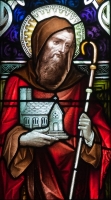
Grellan
Missionary in Ireland, assigned by Saint Patrick to build a church at Achadh Fionnabhrach; king Duach Gallach gave Grellan land for the church after Grellan brought back to life by baptism Duach Gallach's stillborn son, Eoghan Sriabh.
https://catholicsaints.info/saint-grellen/
John of Saxony
Missionary to Germany. Bishop of Ratzenburg, Germany. Evangelized the Baltic Coast. Martyred by local pagans.
Scotland
hands, feet and then head cut off in 1066
https://catholicsaints.info/saint-john-of-ratzenburg/
Orestes of Tyana
Christian physician martyred in the persecutions of Diocletian.
tortured to death in 304 at Tyana, Cappadocia (in modern Turkey)
https://catholicsaints.info/saint-orestes-of-cappadocia/
Narses the Martyr
Bishop of Subagord, Persia (modern Iran). Martyred with a spiritual student named Joseph in the persecutions of Shapur II.
c.399 in Persia
https://catholicsaints.info/saint-narses-of-subagord/
Bishop of Ravenna, Italy. Known as a miracle worker.
Rome, Italy
• c.175 of natural causes
• relics in the cathedral of Ravenna, Italy
https://catholicsaints.info/saint-probus-of-ravenna/
Adelheim of Sees
Benedictine monk at Saint-Calais, France. Abbot at Saint-Calais. Bishop of Sees, France for 26 years from 884.
c.910
https://catholicsaints.info/saint-hadelin-of-sees/
Benedictine monk at Hirschau, Germany. Elected to the bishopric of Spire, Germany, but turned it down, citing his own unworthiness.
965 of natural causes
https://catholicsaints.info/saint-guerembaldus/
Eustasius
Martyred with 22 companions.
at Antioch, Syria, date unknown
https://catholicsaints.info/saint-eustosius-of-antioch/
Anian
Deacon. Martyred with 22 companions.
at Antioch, Syria, date unknown
https://catholicsaints.info/saint-anianus-the-deacon/
Bishop of Orleans, France. Supported monastic expansion in his diocese.
c.490
https://catholicsaints.info/saint-monitor-of-orleans/
Bishop. Martyred with 22 companions.
at Antioch, Syria, date unknown
https://catholicsaints.info/saint-demetrius-of-antioch/
Spiritual student of Saint Narses the Martyr, and martyred with him in Persia.
https://catholicsaints.info/saint-joseph-the-martyr/
Venerated at Melun, France, but no details of their life have survived.
https://catholicsaints.info/saint-leo-of-melun/
Bishop of Heliopolis in 471.
https://catholicsaints.info/saint-nonnus-of-heliopolis/
A group of Christians who were tortured and martyred together in the persecutions of Diocletian. The only details about them to survive are the names - Florentia, Modestus and Tiberius.
martyred c.303 in Agde, France
https://catholicsaints.info/martyrs-of-agde/
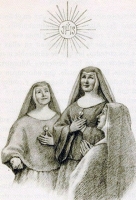
23 nuns, all members of the Sisters Adorers, Handmaids of Charity and of the Blessed Sacrament who were martyred together in the Spanish Civil War.
• Blessed Aurea González
• Blessed Belarmina Pérez Martínez
• Blessed Cecilia Iglesias del Campo
• Blessed Concepción Vázquez Areas
• Blessed Dionisia Rodríguez De Anta
• Blessed Emilia Echevarría Fernández
• Blessed Felipa Gutierrez Garay
• Blessed Francisca Pérez de Labeaga García
• Blessed Josepa Boix Rieras
• Blessed Lucía González García
• Blessed Luisa Pérez Adriá
• Blessed Magdalena Pérez
• Blessed Manuela Arriola Uranda
• Blessed María Dolores Hernández San Torcuato
• Blessed María Dolores Monzón Rosales
• Blessed María García Ferreiro
• Blessed Maria Mercè Tuñi Ustech
• Blessed María Zenona Aranzábal de Barrutia
• Blessed Prima de Ipiña Malzárraga
• Blessed Purificación Martínez Vera
• Blessed Rosa López Brochier
• Blessed Sinforosa Díaz Fernández
• Blessed Teresa Vives Missé
10 November 1936 in Madrid, Spain
28 October 2007 by Pope Benedict XVI
https://catholicsaints.info/martyred-sisters-adorers/
CatholicSaints.Info Portable Edition